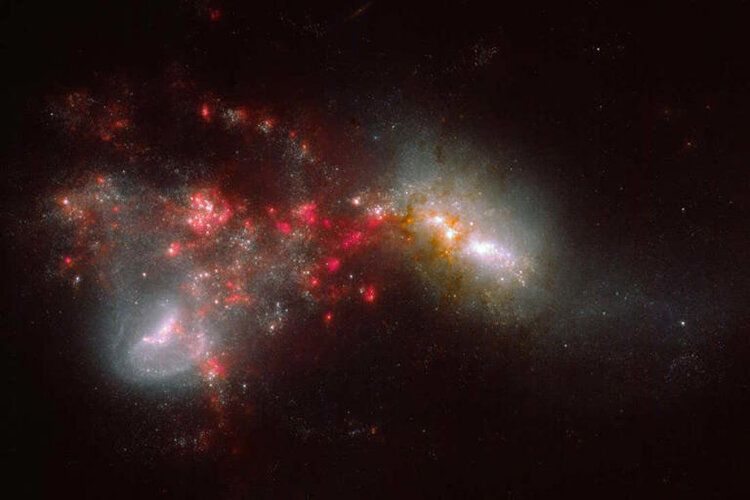James Webb Space Telescope
Makes me think twice that Earth will survive the Andromeda merge.The James Webb Space Telescope (JWST) has caught two galaxies colliding. In the midst of this cosmic clash, researchers have found something unexpected – there doesn’t seem to be an active supermassive black hole in either galaxy.
The pair of galaxies, called IC 1623 or VV 114, is about 275 million light years away in the direction of the constellation Cetus. Lee Armus at the California Institute of Technology and his colleagues observed them with JWST as part of a campaign to spot four relatively nearby, bright galaxy mergers and figure out how they work.
“A merger brings dramatic changes to the galaxy’s shape and content and pretty much everything, so we really have to understand this process to figure out how galaxies evolve,” says Vivian U at the University of California, Irvine, part of the team conducting this research.
As two galaxies orbit one another and collide, they rip huge streams of material off one another and create massive shock waves that pass through both galaxies. Both of these processes are highlighted in the red splotches in this image, which are star-forming regions shrouded in dust. They were most likely spurred into activity by the shock waves...........
https://www.msn.com/en-us/news/tech...sedgntp&cvid=de95ed8dc8c24d1c9df72cbb670556db
